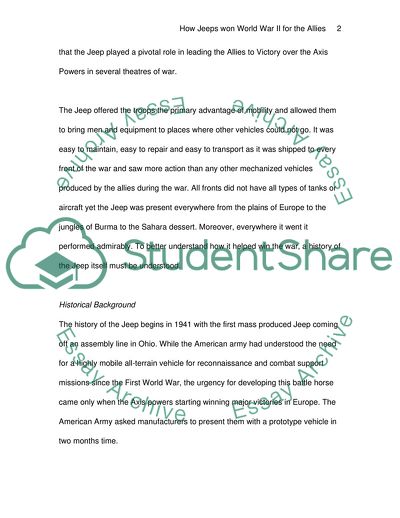Cite this document
(How Jeeps Won World War II for the Allies Case Study, n.d.)
How Jeeps Won World War II for the Allies Case Study. https://studentshare.org/history/1712948-how-jeeps-won-world-war-ii-for-the-allies
How Jeeps Won World War II for the Allies Case Study. https://studentshare.org/history/1712948-how-jeeps-won-world-war-ii-for-the-allies
(How Jeeps Won World War II for the Allies Case Study)
How Jeeps Won World War II for the Allies Case Study. https://studentshare.org/history/1712948-how-jeeps-won-world-war-ii-for-the-allies.
How Jeeps Won World War II for the Allies Case Study. https://studentshare.org/history/1712948-how-jeeps-won-world-war-ii-for-the-allies.
“How Jeeps Won World War II for the Allies Case Study”. https://studentshare.org/history/1712948-how-jeeps-won-world-war-ii-for-the-allies.


